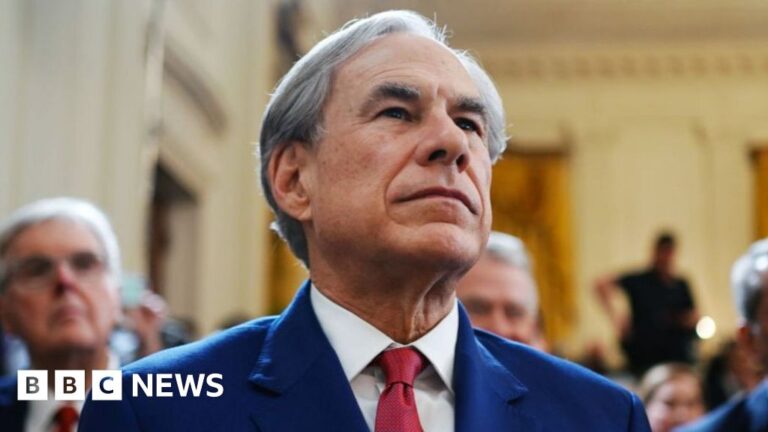Last week, I saw aid dropping from the sky near my central Gaza neighbourhood of az-Zawayda. Neither I nor any of my neighbours had the courage to chase after it because we knew that the moment it hit the ground, a battle would erupt. If the aid survived the air, it wouldn’t survive the looters.
It is almost always the same scene. Gunfire breaks out the second the plane drops the boxes. Armed gangs are already waiting on the ground, ready to take the goods by force. Whoever gets there first, whoever shoots first, also walks away with the food. It is never those who need it the most.
Later, we would see those same “aid boxes” in the market in Deir el-Balah, their contents up for sale at exorbitant prices.
Recently, my little brother was craving a biscuit. I saw biscuits from an aid package at the market and asked for the price. It was 20 shekels ($5) for a biscuit, something we could not afford.
The aid dropped from the sky not only fails to feed the hungry, but it also kills them. On Monday, an airdropped pallet hit a tent for the displaced and killed Uday al-Quraan, a medic working at Al-Aqsa Martyrs Hospital. A week ago, 11 people were injured when another airdropped pallet hit tents in northern Gaza.
Last year, in other failed airdrops, people also died. Five were killed in the Shati refugee camp in Gaza City when the parachute of a pallet did not open; 12 drowned trying to reach boxes that dropped into the sea; six were killed in a stampede after a crowd of people rushed to an airdrop location.
The idea for these latest airdrops came from Israeli Prime Minister Benjamin Netanyahu, who called on the world to help with the process. Many governments welcomed the idea and some joined the effort, including Jordan, the United Arab Emirates and European countries.
But Netanyahu knows very well that the airdrops will not stop the starvation of Palestinians, which is why he called for them instead of opening the land crossings into Gaza and allowing United Nations agencies to distribute aid in a fair and orderly fashion, just like they have always done.
While, the global public may be deceived that something is being done about the hunger, inside Gaza, these airdrops aren’t seen as a real solution or a humanitarian gesture. We see them as nothing more than a PR show – a way to cover up a crime that hasn’t stopped: starving an entire population under tight siege by preventing thousands of trucks from entering while a few boxes fall from the sky for the cameras. It’s all part of a strategy to extend the starvation and ease international pressure on Israel.
And so the famine proceeds at full speed. According to Gaza’s Ministry of Health, more than 180 people have died from hunger, including 92 children.
It is not just in Gaza that airdrops are seen as inefficient and dangerous. In Afghanistan in 2001, airdropped aid was packaged in the same way as cluster bombs. The latter would get mistaken for food boxes by children who would get killed running after them. In Syria, aid airdropped into a besieged area did not reach the starving civilians because it was either damaged or fell into ISIL (ISIS)-held territory.
It is well known that airdrops do not work and when other options are available, there is no reason to use them. The UN has repeatedly said this method is ineffective and ground delivery is safer and far better. A truck can carry four to 10 times more aid than a parachute. It is also much cheaper. Thousands of trucks are waiting on the Egyptian side of the border, enough to feed people and prevent more deaths from starvation.
And yet, we see this futile spectacle once again in Gaza. Here we know not to look to the sky with hope. The same sky that drops bombs can’t be trusted to drop food.
This “humanity with parachutes” is a fig leaf deployed to try to cover the world’s shame and its decision to silently watch starvation.
Gaza is not only under siege by bombs but also by lies, by complicity, by soft language covering bloody massacres. Everyone who stays silent, who justifies, who treats the killer and victim as equal is a partner in this crime.
And we, the Palestinians, are not just victims – we are witnesses. We see the world refuse to act, we see countries continue to arm Israel, to trade with it, to give it diplomatic cover. We see governments think of pitiful excuses not to impose embargoes – as they are obliged to do under international law – on a nation committing genocide.
And tomorrow, when history is written, it won’t be in the language of diplomacy with euphemisms and excuses. It will be in the language of facts with the names of those complicit in the mass killing and starvation of Palestinians written in clear letters.
The views expressed in this article are the author’s own and do not necessarily reflect Al Jazeera’s editorial stance.
















